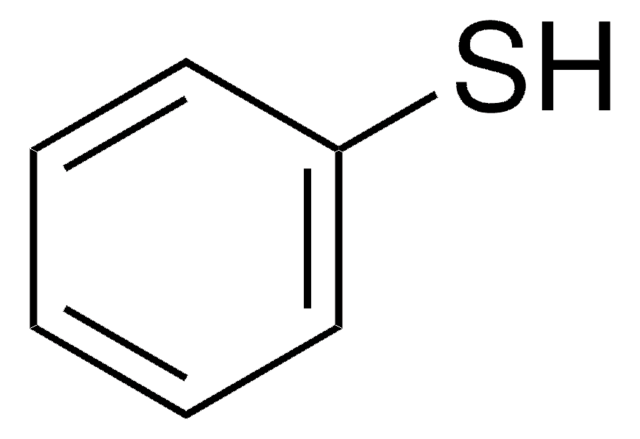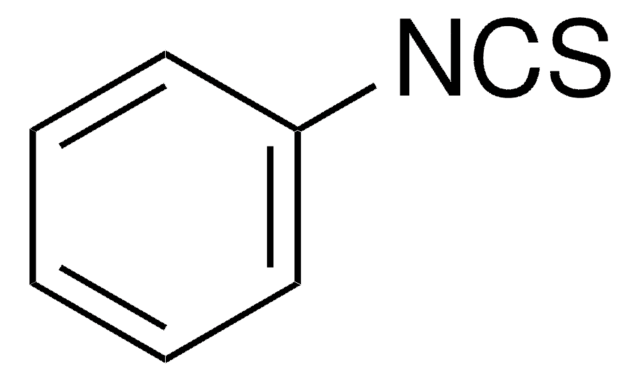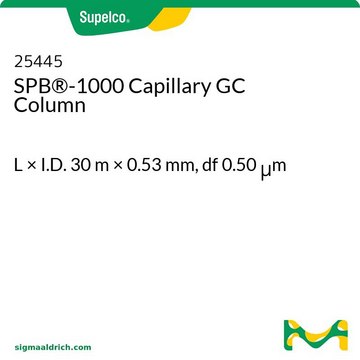24251
SPB®-624
L × I.D. 60 m × 0.32 mm, df 1.80 μm
Sinónimos:
SPB-624, 60M .32MM 1.8UM
About This Item
Productos recomendados
Materiales
fused silica
Agency
EPA 524.2,0030,624,8260,OLM04.2 VOA
meets requirements for USP G43
Parámetros
≤25-250 °C temperature (isothermal or programmed)
Valor Beta
44
df
1.80 μm
técnicas
gas chromatography (GC): suitable
L × D.I.
60 m × 0.32 mm
aplicaciones
environmental
food and beverages
pharmaceutical
tipo de columna
capillary intermediate polar
¿Está buscando productos similares? Visita Guía de comparación de productos
Descripción general
USP Code: This column meets USP G43 requirements.
Phase:
- Bonded
- Proprietary
- ≤0.32 mm I.D.: Subambient to 250 °C (isothermal or programmed)
- ≥0.53 mm I.D.: Subambient to 230 °C (isothermal or programmed)
Aplicación
Otras notas
Información legal
Código de clase de almacenamiento
13 - Non Combustible Solids
Clase de riesgo para el agua (WGK)
nwg
Punto de inflamabilidad (°F)
Not applicable
Punto de inflamabilidad (°C)
Not applicable
Elija entre una de las versiones más recientes:
¿Ya tiene este producto?
Encuentre la documentación para los productos que ha comprado recientemente en la Biblioteca de documentos.
Nuestro equipo de científicos tiene experiencia en todas las áreas de investigación: Ciencias de la vida, Ciencia de los materiales, Síntesis química, Cromatografía, Analítica y muchas otras.
Póngase en contacto con el Servicio técnico





